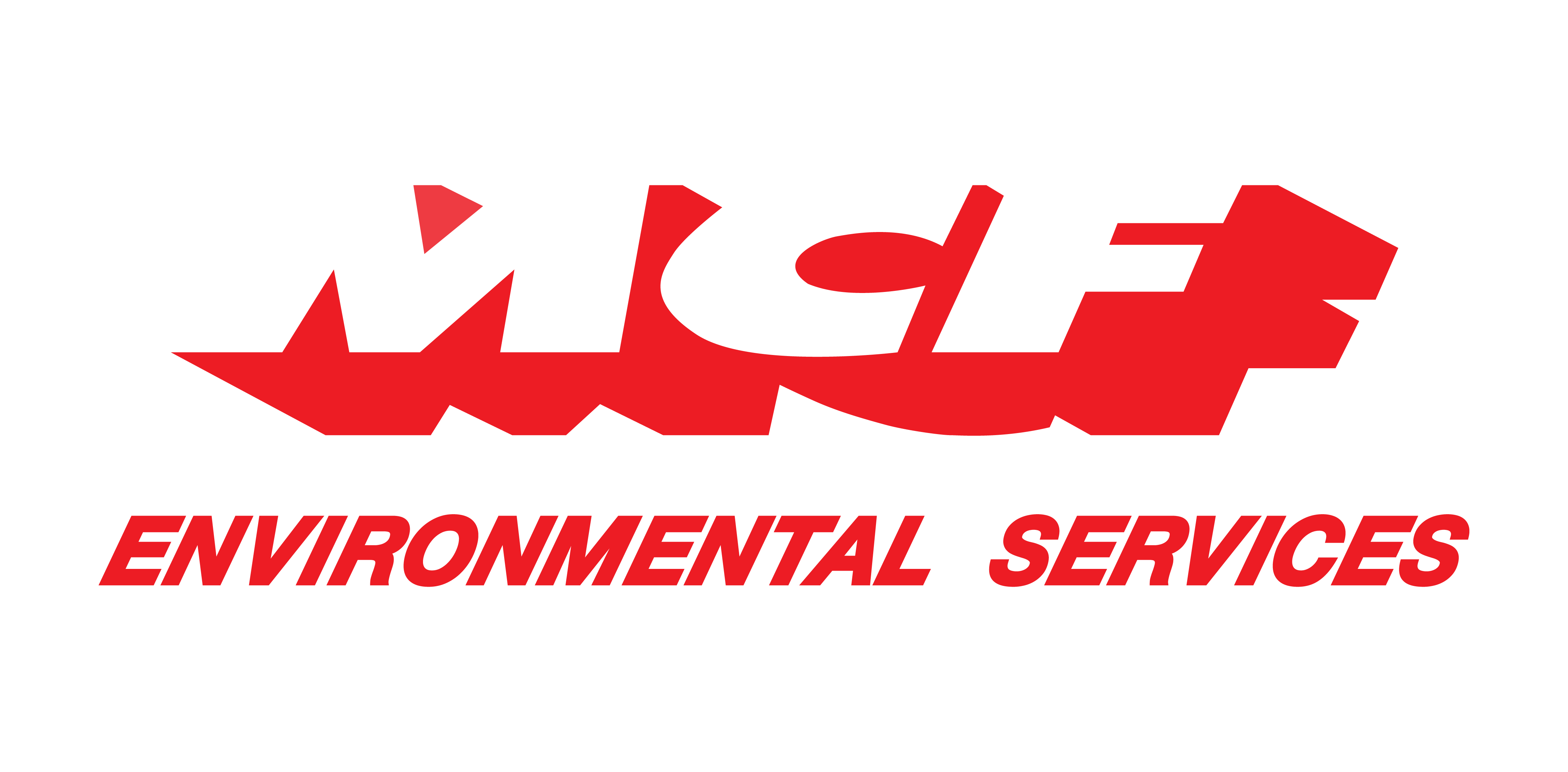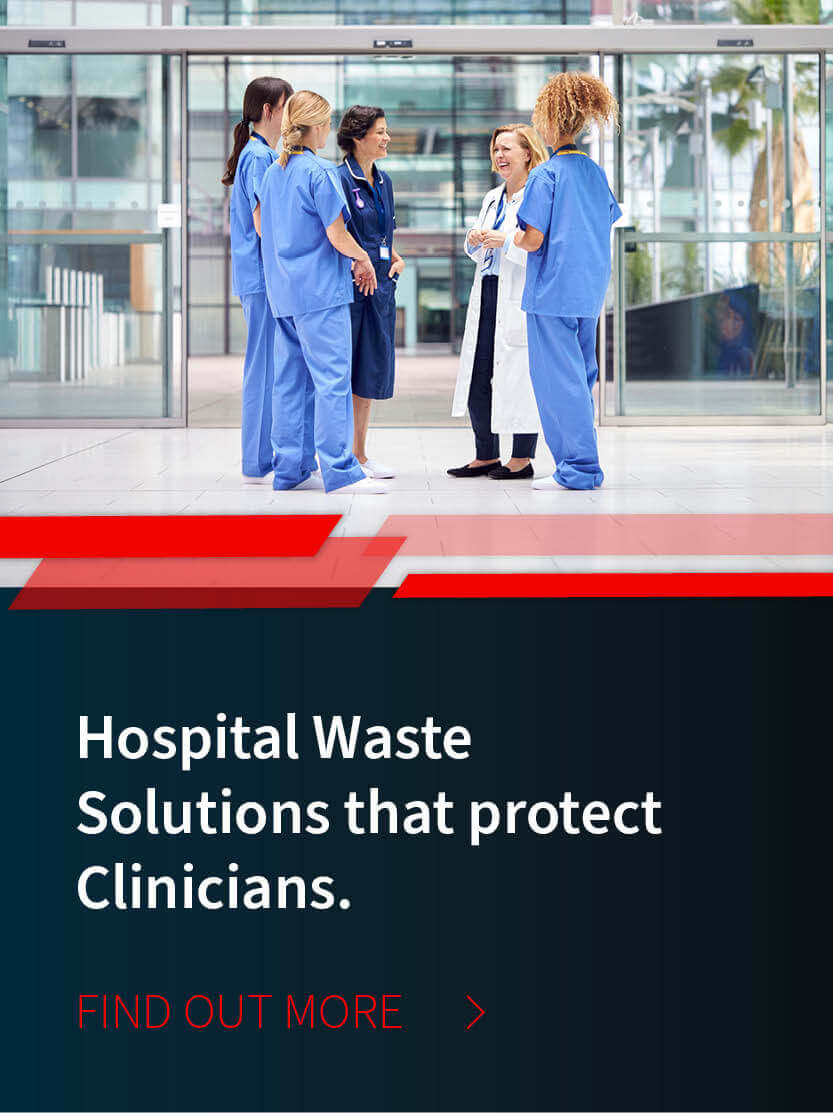
/ IN THIS BLOG
Medical waste management entails so many rules and protocols you must follow, and under that umbrella, hospital waste management is certainly no exception. Creating and following a best practices plan for your hospital waste management helps to ensure that you remain in compliance with hospital-specific regulations of your locality, state, and the federal government.
01 / Waste Management starts with Waste Stream Segregation
Proper waste segregation contributes to less mixed waste, which not only saves money on waste transportation and disposal costs, but aids in the safety of healthcare staff, patients, and visitors to any hospital. All hospital waste must be properly identified and disposed of as close to the point of origin as possible. Keeping hazardous waste out of non-hazardous waste and biomedical or infectious waste separated from normal ‘trash’ is also essential for environmental safety.
Efficiency in hospital waste management requires knowledge of your local, state, and federal laws. A hospital waste management plan can include a medical waste monitoring checklist to assigning certain staff members the responsibility of overseeing management of waste in their sector, such as surgical floors or ER bays to radiology departments, as well as regularly scheduled internal audits.
Internal rules should follow state and federal guidelines, such as sharps disposal in approved containers that are leak and crush-resistant and clearly marked with the ‘Biohazard’ symbol for easy identification
Do all members of your staff (from management to housekeeping) know how to identify and differentiate between pharmaceutical waste and infectious waste and the rules for their handling, storage, and disposal?
Does your hospital have standards in place for the timely and appropriate collection of wastes within the four walls of your facility? Are you up-to-date on federal and state regulations? Are all your waste containers color-coded for easy identification, storage, and disposal, either on-site or for transportation off-site by a waste management company?
Waste stream segregation is the first step of best practices for hospital waste management. Make sure you’re doing it right.
02 / Hospital Waste Management: How to Get (and Stay) Compliant
In order to stay compliant with hospital waste management regulations, know where to find them. For example, every state has Administrative Codes or Regulations Codes. These codes may differ slightly by state. The Healthcare Environmental Resource Center provides a state-by-state guideline for regulated waste laws. Terminology may differ slightly from state to state.
In addition to state regulations, every hospital in the country must also abide by federal governmental agencies and their regulations. That includes but is not limited to:
Occupational Safety and Health Administration (OSHA)
Department of Transportation (DOT)
Drug Enforcement Agency (DEA)
It takes time and patience to wade through regulations for the collection and disposal of regulated medical waste, non-regulated hospital waste, and hazardous waste. Yet it is the responsibility of every hospital waste generator to know and follow the laws in order to maintain compliance and avoid fines and penalties – and promote safety.
Know your waste streams and train staff in their proper handling and disposal.
03 / Proper Red Bag Waste Disposal
Hospitals tend to create a fair amount of regulated medical waste— in fact, some hospitals require off-site transportation of red bag waste on a daily basis. Don’t let the name ‘red bag’ waste confuse staff. ‘Red bag’ waste is simply another term for biohazard or potentially infectious waste. That means anything contaminated with blood or any other potentially infectious agent from blood-stained wound dressings to urine specimen cups. In-depth information about regulated wastes can be found in the Code of Federal Regulations (CFR) Title 40 Parts 239 through 282. Non-hazardous solid waste regulations can be found in Title 40 Parts 239 through 259.
It's imperative that every employee who encounters this waste stream knows how to properly deal with it. This includes knowing what does and does not go into a red bag, box, or container. Mixing a biohazardous waste with ‘regular trash’ makes ALL the waste biohazardous and it must be handled as such. The most notable items to keep out of your regulated waste include expired medications and regular trash (such as food scraps).
Proper regulated medical waste disposal also involves adequate training regarding all containers, including the red bags themselves and puncture-resistant sharp bins.
04 / Pharmaceutical Waste Disposal
Another kind of waste commonly created in a hospital is invariably pharmaceutical waste. A pharmaceutical waste is generally defined as one that is no longer needed for treatment or one that has been opened or used and cannot be returned to the manufacturer. Be aware of not only federal but state regulations for compliant disposal processes.
All employees need to be trained on the proper handling and disposal of this waste stream as well. A primary rule to follow is that pharmaceutical waste should never be placed in a biohazardous or infectious waste container.
Regulations for pharmaceutical hospital waste depends on a number of factors, such as size of the facility and whether the pharmaceutical waste is also hazardous in nature, such as antineoplastic drugs used in chemotherapy or radiation therapies. Whether regulated or not, pharmaceutical wastes should never be tossed down a drain.
A hospital that generates pharmaceutical waste is required to comply with proper waste management practices guided by local, state and federal agencies. That means knowing the characteristics of a pharmaceutical waste that may deem it hazardous: toxic, corrosive, ignitable, or reactive. If it has an EPA waste code, it’s a pharmaceutical drug.
Regardless of size, all hospitals are required to maintain compliance when dealing with this waste stream. Don’t risk shortcuts or less than legal means of disposal, as fines are extremely costly. Fines for illegal or improper pharmaceutical waste disposal range $10,000 and up to $25,000 per violation, per day until the situation is rectified. A hospital facility that fails to follow transportation rules for off-site disposal can face up to $15,000 by the Department of Transportation.
It doesn’t end there. The Resource Conservation and Recovery Act states that any facility dinged for non-compliance for hazardous waste disposal can face anywhere from $37,000 and up to $70,000 per day, per violation until the problem is fixed.
05 / Other Facets of Hospital Waste Disposal
Keep in mind that most departments in a hospital environment also produce their own waste streams. For example:
Lab waste, if a laboratory is on-site
Maintenance waste, such as paints, cleaners, and so on
Universal waste, such as batteries and light bulbs. (These don't ship out as hazardous waste, but they do need to be recycled.)
The best way to assess what your hospital needs to do in regard to the waste streams generated by your facility is to perform regular walk-throughs and audits. This will help you see areas that need improvements when it comes to waste management and what processes need to be put in place to reach full compliance. This can be done on your own or with a reputable waste management company.
If you do choose to go with a waste management company, make sure they cater to a hospital of your size and needs. Also make sure they provide physical necessities (waste containers, for example) as well as educational guidance and suggestions regarding how best to approach your waste management.
For more information about how to dispose of hospital waste correctly or what your hospital needs to do to be compliant, contact a representative of MCF Environmental Services. With over three decades of experience, we serve states throughout the country and are based in Atlanta, Georgia.
Robert Losurdo
President, COO








